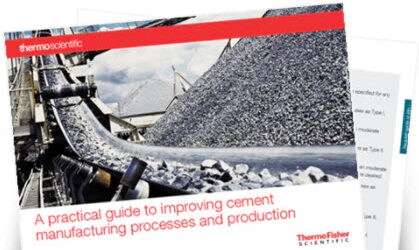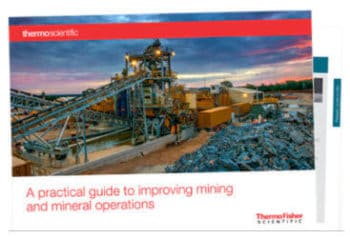 Ore sorting is regularly highlighted as a technology of real merit and long-term potential for a mining industry tasked with efficiently processing progressively lower grade ore bodies. In this blog, I’m going to take a look at the sensing technology at the heart of ore sorting, and at how implementation positively impacts mining operations.
Ore sorting is regularly highlighted as a technology of real merit and long-term potential for a mining industry tasked with efficiently processing progressively lower grade ore bodies. In this blog, I’m going to take a look at the sensing technology at the heart of ore sorting, and at how implementation positively impacts mining operations.
What is ore sorting?
Ore sorting involves identifying and removing waste and below-grade ore to preconcentrate the process plant feed. It produces higher, more stable head feed grades that essentially ‘preserve’ the processing capacity for economic ore – ore that holds higher value than the cost of processing. Ore sorting can reduce variability and deliver more value to the concentrator on an hourly basis. As a concept it’s intuitively sensible.
What are the options for sensing technology?
Successful ore sorting relies on identifying technology that can differentiate acceptable ore. Manually ore sorting by eye is the traditional approach, but clearly this is costly and imprecise. Increasingly, miners have a range of sensors to choose from to implement either particle-based or bulk sorting, or both.
Sensors for particle-based sorting use properties such as density, magnetism or color to separate particles on an individual basis, typically using a high-pressure air ejector. Bulk sorting is based on compositional analysis of a larger sample, for example, by continuously scanning the ore on a moving conveyor belt. Online elemental analyzers utilizing penetrative techniques, such as prompt gamma neutron activation analysis (PGNAA), are preferable because of their ability to provide more representative analysis than techniques like X-ray fluorescence, which only scan surface composition and can be sensitive to the presence of dust.
The two approaches are not mutually exclusive. Particle sorting is typically lower throughput than bulk ore methods. It can therefore be productive to use bulk analysis for primary sorting, and follow up with particle sorting for a final QA/QC check. Directing presorted low-grade waste – or ore with undesirable elements – to particle sorting navigates throughput limitations, while at the same time minimizing the amount of valuable mineral mistakenly sent to waste.
What are the potential gains?
Ore sorting can deliver a slate of benefits that are closely aligned with miners’ current goals. For an established mine, it can extend life, prolonging economic operation in the face of declining ore grade without mill expansion. For a new mine, it may reduce the size of the processing plant required for a low-grade ore body, improving the investment case and project acceptability. Ore sorting drives down energy consumption per tonne of concentrate produced; it reduces the grinding of waste material and the water and reagent consumption in the flotation circuit.
However, ore sorting is far from a one-size-fits-all technology. The far-reaching effects on a mining operation require careful evaluation to ensure success. From a sensor perspective, identifying and establishing the right solution requires extensive knowledge of the mineral ore body. Ores that are homogeneous are less easy to sort than those with greater heterogeneity. Minerality and the presence of different elements can influence the relevance of different technologies. Furthermore, evaluations are complicated by an ever-changing landscape with respect to ore body (with depth), energy source, and price, as well as metal values.
In future articles, I’ll be looking at how to robustly assess sensor technology to de-risk ore sorting projects. Click on this link if you want to find out more about PGNAA and its potential future applications in ore sorting and subscribe to this blog to get notified when new articles are published..






There are so many moving parts in any mining operation. Improving any of them could have a great impact on the overall operation. Thanks for sharing this, hopefully the technology continues to develop!